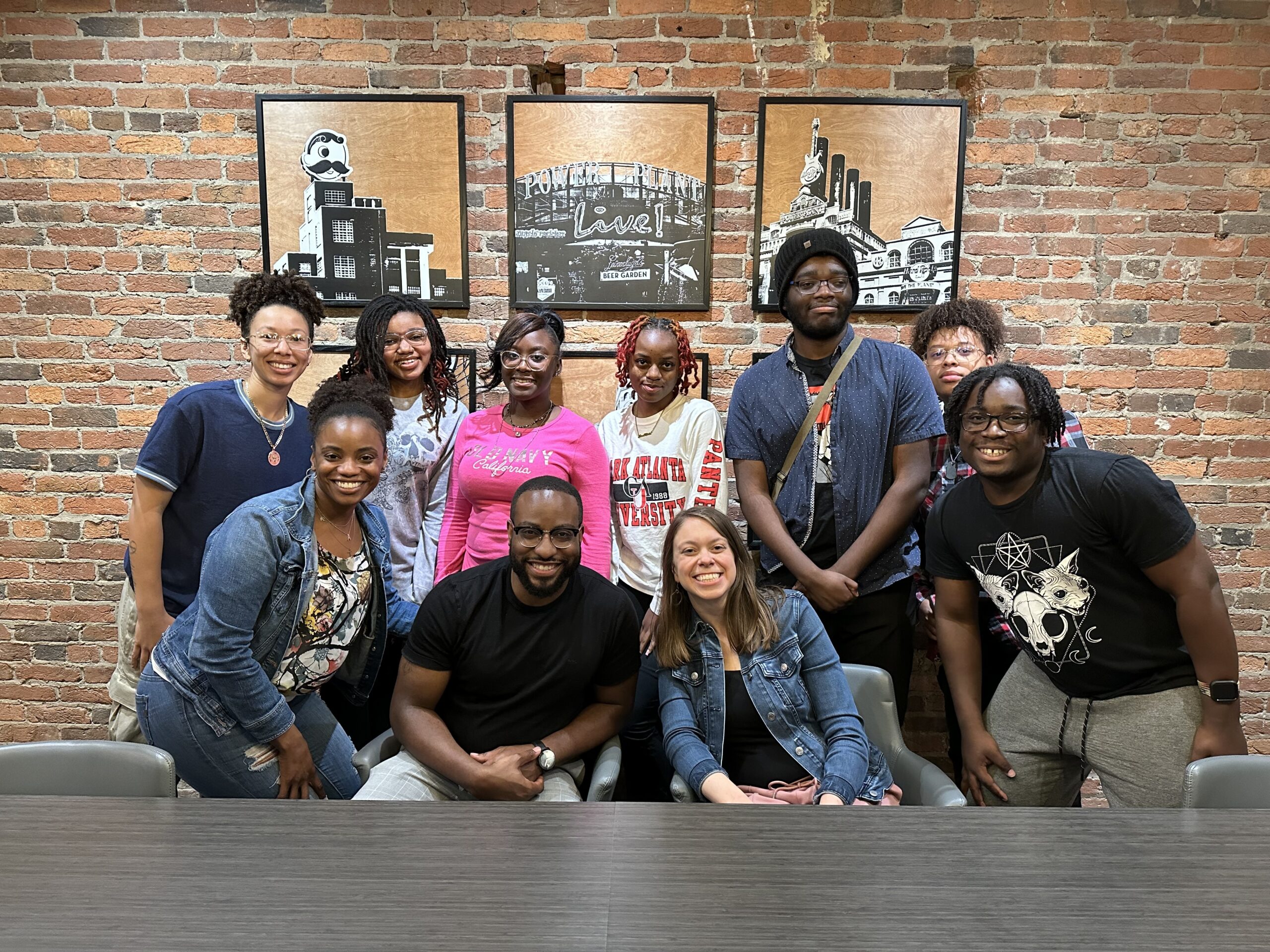Build the capacity of nonprofits serving youth experiencing homelessness
Lesson Learned:
To address youth homelessness, look for organizations implementing direct cash transfer, rapid rehousing, and host home programs.
In the U.S., more than 3.5 million young adults ages 18 to 25 — one of every ten people this age range—and 700,000 youth ages 13 to 17 in the U.S. experience a form of homelessness over the course of a year.[1] Young people experiencing homelessness are at a higher risk for substance misuse, HIV, interpersonal violence, and mental health issues compared to non-homeless youth.[2, 3, 4]
“We’re actually being heard and listened to, and that makes me really happy.”
– a member of Point Source Youth’s youth advisory board who has experience homelessness

What It Does
Point Source Youth (PSY) provides technical assistance, training, fundraising help, and program evaluation support to organizations working with youth and young adults experiencing homelessness. In consultation with a board of youth advisors who have experienced homelessness, PSY helps its partners to implement three best-practice interventions: rapid re-housing, host homes, and direct cash transfers.
- Rapid re-housing programs provide young people experiencing homelessness ages 18 to 24 with rental assistance for up to two years with leases in their own names.
- Host home programs connect young people experiencing housing instability with short-term housing with an adult mentor for a period determined by the young person and their host.
- PSY helps partner organizations to implement direct cash transfer programs, programs in which unrestricted funds are distributed directly to youth and young adults experiencing or at risk of experiencing homelessness
Each program also offers additional optional supports that include assistance navigating the housing process, financial coaching, and mentorship. PSY assists 90+ organizations and hosts a national convening to involve stakeholders from many different sectors in the fight to end youth homelessness. The organization also works with its partners to advocate for local, state, and federal government support of rapid re-housing, host homes, and direct cash transfer programs.
How effective It Is
A longitudinal study found that after 12 months, 85% of participants in rapid re-housing programs supported by PSY reported feeling safe where they slept at night and 50% reported having full-time employment, both 20% increases from the beginning of the program.[5]
Research suggests that host home programs and direct cash transfers are also effective approaches to ending youth homelessness. Host homes can cost as much as 50% less per youth than congregate shelters. Both a small evaluation of host home programs in Alaska and a large study in the U.K. each found that 96% of participants transitioned to a safe living environment after their stay.[6]
Similarly, direct cash transfers are one of the most studied interventions for addressing poverty and improving health, employment, and education outcomes. [7, 8, 9]
How philanthropy helps
Point Source Youth receives 91% of its funding from philanthropic sources. Philanthropic support will allow the organization to expand to additional sites, including San Francisco, Los Angeles, Oregon, Vermont, and Baltimore. Philanthropic funding also allows PSY to make its resources available free of charge to aid service providers around the country. Learn more at https://www.pointsourceyouth.org/.
More ways to help
Pathways to Housing PA uses a Housing First model to provides homes to people without the precondition of sobriety—a model that has led to discontinued substance use, greater participation in job training programs, and fewer days of hospitalization. HomeStart’s The Renew Collaborative works to keep people at risk of homelessness in their homes by working with tenants and their landlords.
Notes
[1] Morton, M.H., Dworsky, A., & Samuels, G.M. (2017). Missed opportunities: Youth homelessness in America. National estimates. Chicago, IL: Chapin Hall at the University of Chicago.
[2] Whitbeck, L. B., Hoyt, D. R., & Yoder, K. A. (1999). A Risk-Amplification Model of Victimization and Depressive Symptoms Among Runaway and Homeless Adolescents. American Journal of Community Psychology, 27(2), 273–296. https://doi.org/10.1023/A:1022891802943
[3] Petering, R., Barr, N., & Rice, E. (2021). Can Better Emotion Regulation Protect Against Interpersonal Violence in Homeless Youth Social Networks? Journal of Interpersonal Violence, 36(11–12), 5209–5228. https://doi.org/10.1177/0886260518804183
[4] Heerde, J. A., Hemphill, S. A., & Scholes-Balog, K. E. (2014). ‘Fighting’ for survival: A systematic review of physically violent behavior perpetrated and experienced by homeless young people. Aggression and Violent Behavior, 19(1), 50–66. https://doi.org/10.1016/j.avb.2013.12.002
[5] Petering, R. (2021). An In-depth Look at the Impact of Rapid Re-Housing for Young Adults Previously Experiencing Homelessness. Point Source Youth. https://www.pointsourceyouth.org/rrh-report-impact-on-youth-experiencing-homelessness
[6] Ecker, J., Sariyannis, P., Holden, S., & Traficante, E. (2018). Bridging the Gap’s Host Homes Program: Process & Outcomes Evaluation. https://doi.org/10.13140/RG.2.2.33552.76807
[7] Matthew Morton, Chavez, R., Kull, M., Devorah Carreon, E., Bishop, J.-A., Daferde, S., Wood, E., Cohen, L., & Barreyro, P. (2020). Direct Cash Transfers Programs Can Help Youth Sustainably Exit Homelessness – Chapin Hall. Retrieved October 16, 2023, from https://www.chapinhall.org/research/direct-cash-transfers-program-can-help-youth
[8] Baird, S., Ferreira, F. H. G., Özler, B., & Woolcock, M. (2013). Relative Effectiveness of Conditional and Unconditional Cash Transfers for Schooling Outcomes in Developing Countries: A Systematic Review. Campbell Systematic Reviews, 9(1), 1–124. https://doi.org/10.4073/csr.2013.8
[9] Pega, F., Liu, S. Y., Walter, S., Pabayo, R., Saith, R., & Lhachimi, S. K. (2017). Unconditional cash transfers for reducing poverty and vulnerabilities: Effect on use of health services and health outcomes in low‐ and middle‐income countries. The Cochrane Database of Systematic Reviews, 2017(11), CD011135. https://doi.org/10.1002/14651858.CD011135.pub2
